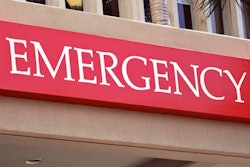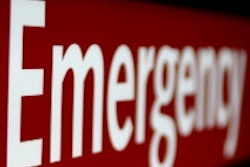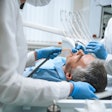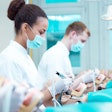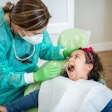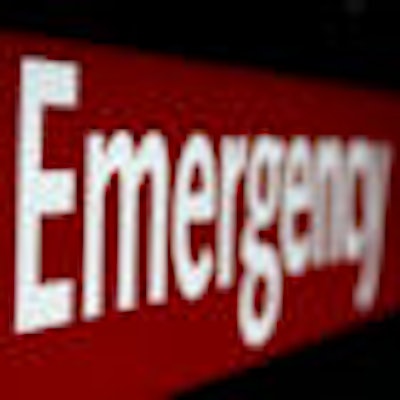
A new report from the U.S. Agency for Healthcare Research and Quality (AHRQ) that scoured a database of emergency department (ED) visits for 29 states found patterns familiar to dentistry: Young people, the uninsured and Medicaid participants, the poor, and those living in rural areas are the most likely to seek dental services in this manner.
"Patients that are going to the ED [for dental care] are totally different from the general ED population," Ernest Moy, MD, a medical officer at AHRQ's Center for Quality Improvement and Patient Safety, told DrBicuspid.com. "About half of all ED visits are from the elderly, 65 and older, but this is a much, much younger group. The peak age we found in terms of rates of use of the ED [for dental] was 25 to 29, a group that generally doesn't use the ED that much."
The report, the first of its kind to focus on dental-related ED visits and the first in a series of related documents, contains data from the Healthcare Cost and Utilization Project (HCUP) for 2009. The project includes the largest all-payor encounter-level collection of longitudinal healthcare data (inpatient, ambulatory surgery, and emergency department) in the U.S., according to AHRQ. HCUP, a partnership between federal, state, and industry stakeholders, combines data collected by the federal government, state data organizations, hospital associations, and private data organizations.
“We found that insurance isn't the whole story.”
These findings will be included in the National Healthcare Quality and Disparities Reports. The Congress-mandated reports inform lawmakers about the overall quality of healthcare in the U.S., as well as disparities in care, explained Dr. Moy, who compiled the report with an ED doctor and a student intern.
"Many of our products target state policymakers," he added. "It helps them understand areas where their state is strong and others where problems need to be addressed."
Insurance and age
Dr. Moy and his fellow researchers began work on their analysis about a year ago, after they became aware of reports about Americans seeking dental care at EDs.
"At AHRQ, one of the databases we maintain is the nationwide emergency department database, the largest collection of ED visits," he explained. "We looked at ED visits and established that, first of all, there are a huge number of dental-related visits."
Some 936,000 ED visits and nearly 13,000 hospital inpatient stays stemmed from dental conditions in 2009 alone, according to the report. The researchers also observed a 16% increase in ED patients seeking dental treatment from 2006 to 2009.
So who uses the ED for dentistry and why? The 18-to-44 age group constitutes 62% of the people going to the ED for dental-related treatment, according to Dr. Moy, and 18% of all ED visits.
"And if you drill down even further, the peak age is in the 25-to-29 group, so young people just outside of childhood, probably just getting off their parents' insurance to some degree," he said.
Young men and women in the age groups of 20 to 24 and 30 to 34 are in close succession.
"One of the big factors is insurance, and people in that 18-to-44 age range don't have coverage for dental services," Dr. Moy stated. "So they end up in the ED needing acute service."
When broken down by expected pay source for dental-related ED visits, the two largest groups are the uninsured (40%) and Medicaid (30%). For all other ED visits, the uninsured only account for 17%, while Medicaid payor rates are similar at 25%. Private insurance was the expected pay source of 19% of dental-related ED visits, while it covered 33% of all other ED visits.
The rates were similar for treat-and-release ED dental patients. However, patients admitted to the hospital for dental-related issues were more likely to be covered by Medicare, "other" payment sources, or private insurance. In that group, 26% had private insurance and only 20% were uninsured.
Dr. Moy concluded that lack of insurance coverage is leading to adverse dental outcomes and the use of the ED for treatment.
"That is probably undesirable and inefficient," he said.
Not the whole story
However, "we found that insurance isn't the whole story," he added. "We wanted to look at issues other than just the patient-related characteristics and found that rural residents have much higher rates of using the ED for dental services compared to urban."
Rural populations had more than double the number of total ED visits for dental services (480 per 100,000) compared to large metropolitan areas (217 per 100,000). Micropolitan populations fared similarly, with 478 visits per 100,000, while small metropolitan areas -- fewer than 1 million residents -- fell in between, at 369 visits per 100,000.
"Then when we tried to look at the actual neighborhoods to ascertain the number of dentists in those neighborhoods, there was an inverse relationship between the number of dentists available in the neighborhood and the use of EDs for dental services," Dr. Moy said.
For areas with 3,000 to 4,000 patients per dentist, the researchers observed 447 dental-related ED visits per 100,000 population. This compared to 216 dental-related ED visits in areas with the most dentists, or fewer than 1,500 patients per dentist.
Community income level was also significant. There were more than four times the total dental-related ED visits per 100,000 in communities at the lowest income level compared to those at the highest (452 versus 111).
"The basic problem is access to care," Dr. Moy stated. "In the cities the issue is financial, but in other areas, rural areas in particular, it's an availability issue as well. [The data] is totally consistent with the need for more dentists in rural areas."
Dr. Moy noted that the report will not be the last of its kind. "We'll be tracking this on a routine basis," he said.
He also invited the dental community to help guide the scope of AHRQ's future data-mining efforts. "If dental groups have questions or input about aspects of dental care as it pertains to EDs in particular, we welcome that feedback," he said.




